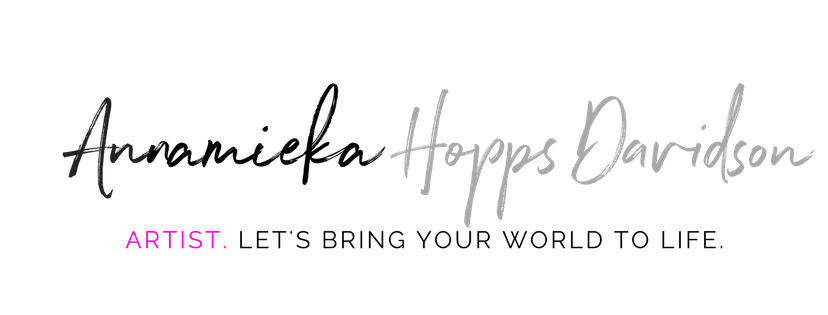Scientists and Artists: Same-Same-But-Different!
I’ve studied lots of science as well as art, and this may be why I see many similarities between scientists and artists.
Both careers involve looking for and making connections. Both groups pursue new ideas and are committed to making new discoveries in the world.
School is common but not required for both groups. I’m sure you’ve heard of self-taught artists, but you may be surprised to learn that some scientists choose not to go to school: I know many forest ecology experts who haven’t been formally trained. Our degree doesn’t get us very far on its own. We have to get a job that supports us where we can practice our art or our scientific field.
Many artists and scientists choose to stay in academia for their careers, where there is support and reward for ideas for ideas’ sake, and for pursuing and discussing these ideas.
A lot of scientists go into research, working in teams with other researchers. Their funding comes from various sources: private organizations, grants, and nonprofits. Similarly, artists can work with other artists or for art organizations, and they may receive funding through private patrons and public and private sector grants for the arts.
Photo by Clint McKoy on Unsplash
If an artist or scientist strikes out on their own, they need to be very entrepreneurial. They need to create a product, service, or a combination of both that meets a need in the world and that people are willing to pay for. The artist can create and sell works of art, teach art, or create some other type of product or service with their artwork and expertise. Similarly, scientists can do independent research, invent something and then market that, teach, speak at events as an expert, and more.
Teaching is an area that is shared by both artists and scientists, and it deserves special mention. A lot of artists that I know teach either in person, online, or by writing about techniques. It’s both enjoyable and a way to supplement their income. It’s also a way to learn more about the process as you teach it! Scientists also have a wide range of teaching opportunities, from getting a Ph.D. and teaching at the university level, getting a Master’s degree and teaching science in the schools, or teaching independent workshops like The Bug Chicks do.
Photo by Lily Uoka
I want to point out how much self-direction is required in both these fields. All of us in these fields have such a passion for what we do and a deep curiosity about the world. I know so many biology and environmental science majors who spent years searching for jobs that would utilize their degree. Some people have to patch together their careers job by job as they obtain various grants to support their work. If you’re lucky and entrepreneurial enough, you may find a base of private patrons who believe in what you do who will sustain you.
The Sitka Center for Art and Ecology is on my mind right now, because I am heading out there again today, to teach my annual “Layers of the Forest” 3-day painting retreat. And I stayed out there last month doing live painting during an open studio tour. Sitka is also a place that is rooted in my artistic development—I spent formative time there over the past decade, honing my teaching skills and reveling in the inspiring environment. The Sitka Center seeks to expand the intersection between art, nature, and humanity. In service of this goal, they invite scientists and artists to come spend time together working on ideas and cross-pollinating.
I think our more logical part of society rewards science more than art, and I want to value the artists as innovators too. I want to promote the thought that the pursuit of ideas—via science and art—is a worthy pursuit, but the ideas themselves don’t owe us anything. It’s up to us to craft a career that is able to sustain us.
The artists and scientists I know accomplish this by a combination of teaching, public support, seeking grants, making viable products and services to sell, writing about their work, and sharing their work with the world. I think that this patchwork hustle is noble!
Some scientists I know choose to have other jobs to support themselves and to maintain enough brain space to devote their intellect to their biggest priority and passion: their scientific pursuits. For example, I know a woman named Leah Bendlin who is a mycologist in the Pacific Northwest—she studies mushrooms. She is highly sought after, especially in the spring and fall when the mushrooms are plentiful. Her workshops and tours are routinely packed. However, she chooses to work as a housekeeper in her other hours, because it maintains her flexible schedule, pays well, and allows her intellectual mind to rest. Leah can then dedicate the rest of her time to her scientific studies.
I’m fascinated by how people put their lives together to pursue their passions. I feel that there is always a job, to go along with the art, whether that job is working for the art directly, like I do, running a creative business and sending you newsletters, or if that job is completely independent of the artistic or scientific pursuit. I’m inspired by the sacrifices and creative careers that both artists and scientists make, and each thinker puts this puzzle together in their own unique way!
Are you interested in knowing what resources I’ve used to figure out my own creative career? Want to see my “Favorite Business Resources for Artists”? I’m not a business coach and I don’t aspire to be one but I have sought out the support of many books, courses, and people while building my creative business and I’m happy to share my favorites with you!



